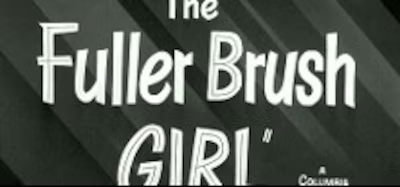The Fuller Brush Girl

Brief Synopsis
Cast & Crew
Lloyd Bacon
Lucille Ball
Eddie Albert
Carl Benton Reid
Gale Robbins
Jeff Donnell
Film Details
Technical Specs

Synopsis
Sally Elliott and Humphrey Briggs want to get married and buy a house, but cannot afford it even with their combined salaries from the Maritime Steamship Company, where Sally is a switchboard operator, and Humphrey is a file clerk. After the cargo supervisor is fired, Sally encourages the timid Humphrey to apply for the job. Unknown to Sally and Humphrey, Harvey Simpson, the head of the company, is smuggling diamonds and wants to replace the former supervisor with a stupid man, like the unassuming Humphrey. On the strength of his new position, Humphrey puts a down payment on a house. At the office, Sally's friend, Jane Bixby, a Fuller Brush saleswoman, stops by to demonstrate the cosmetics she is selling. While trying the cosmetics, Sally manages to blow up the switchboard and is fired. Jane then convinces her to apply for a job as a Fuller Brush Girl. Sally needs good references, however, and because she is sure that Simpson will not give her one, she decides to prove her sales abilities by taking over Jane's route for a few days. Meanwhile, Simpson's wealthy wife Claire smells cosmetics on his clothes and accuses him of having an affair. Consequently, when Humphrey approaches him about Sally, Simpson makes a deal to give Sally a good reference if she will tell his wife what happened. On her route, Sally learns that selling cosmetics is not easy. At the first house, the housewife sells her a magazine subscription. At the next, she is mistaken for the baby sitter. At the third, Sally gives home permanents to a group of women playing cards and mistakenly applies chemicals from a boy's chemistry set that cause all of their hair to fall out. Then Humphrey tracks Sally down and sends her to talk to Claire. In the meantime, Simpson, who has learned that Claire has started proceedings to remove him from the company, instructs burlesque dancer Ruby Rawlings to pretend to be Sally. When Sally arrives at the Simpsons, Ruby knocks her unconscious and places a gun in her hand. Humphrey arrives shortly afterward and discovers Claire's slain body. He calls the police, then discovers the unconscious Sally. Sally is sure that she must have killed Claire, although she does not remember doing so. Hoping to straighten things out, Humphrey and Sally go to Simpson's office, where Humphrey finds Simpson's body. Outside, Sally sees a poster advertising Ruby's show and recognizes her assailant. At the burlesque theater, Sally pretends to be a dancer in order to get backstage. She then sneaks into Ruby's dressing room and overhears her arrange to meet a man named Rocky Mitchell at a ship. Sally ties Ruby up and telephones the police, but Rocky, who has just arrived, overhears the call and chases Sally around the theater, trying to kill her. To escape her pursuer, Sally dashes onto the stage and starts to perform. Afterward, she leaps off the stage into the audience and, together with Humphrey, runs from the theater. They are seen by Watkins, a member of the smuggling gang, who pretends to be taking them to the police. Instead he takes them to the Clair S. , the company's ship. At the theater, Ruby tells the police that Watkins, Rocky and Simpson were smuggling diamonds on the Claire S. When Ruby pretended to be Sally, Claire grew suspicious, and Watkins killed her. After the murder, Simpson was killed to stop him from talking to the police. The police then hurry to the docks. By various means, Sally and Humphrey manage to evade the crooks until the police ship arrives.

Director

Lloyd Bacon
Cast

Lucille Ball

Eddie Albert
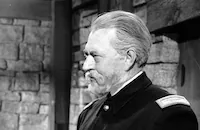
Carl Benton Reid

Gale Robbins

Jeff Donnell
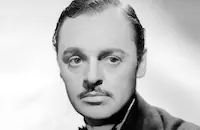
Jerome Cowan

John Litel
Fred Graham
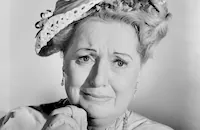
Lee Patrick
Arthur Space
Sid Tomack
Billy Vincent
Lorin Raker
Lelah Tyler
Sarah Edwards
Lois Austin
Isabel Randolph
Isabel Withers
Donna Boswell
Gregory Marshall
Gail Bonney
Joet Robinson
Shirley Whitney
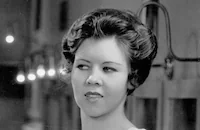
Mary Treen
Sumner Getchell
William Tannen
Bobby Hyatt
Charles Sherlock
Jay Barney

Russ Conway

John Doucette
Charles Hamilton
Joseph Palma
Cy Malis
Frank Wilcox

Jean Willes
Myron Healey
Jack Little
James L. Kelly
Raoul Freeman
Bud Osborne
George Lloyd
Cliff Clark
Paul E. Burns
Syd Saylor
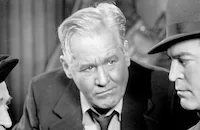
Joseph Crehan
Charles Sullivan
Shirley Ballard

Barbara Pepper
Paul Bryar

Red Skelton
Emil Sitka
Lennie Bremen
Crew
Earl Bellamy
Clay Campbell
James Crowe
Lambert Day
Doris Fisher
Helen Hunt
Charles Lawton Jr.
Jean Louis
William Lyon
Robert Peterson
Allan Roberts
Heinz Roemheld
Morris Stoloff
Frank Tashlin

Film Details
Technical Specs

Articles
The Fuller Brush Girl
In search of a star for what he hoped would be a film series, Sylvan turned to another old friend, Ball, whom he had directed in Abbott and Costello in Hollywood (1945) and Her Husband's Affairs (1947). When the latter, co-starring Franchot Tone, failed at the box office, Sylvan promised Ball to find her a better vehicle. Two years later, he brought her to his Columbia Pictures production unit for the slapstick gem, Miss Grant Takes Richmond (1949). At the time, Ball had just signed to star in the CBS Radio comedy series My Favorite Wife, which would give her the chance to perfect the comic scatterbrain she would become famous for on I Love Lucy.
Ball's radio commitment left her free for film work, while a non-exclusive contract at Columbia paid her a then-impressive $85,000 per picture. And to sweeten the deal, the studio had created a low-budget musical, Holiday in Havana (1949) that allowed her and husband Desi Arnaz to work, however briefly, on the same lot.
The Fuller Brush Girl offered one other advantage. At the time, CBS was considering bringing My Favorite Husband to television. In her films for Simon, she got to work on the physical side of the character, showing off the slapstick skills she had developed working with Buster Keaton during his days as a gag man at MGM.
For their second film at Columbia, Simon brought back many of the production team who had worked so well with Ball on Miss Grant Takes Richmond, including director Lloyd Bacon, cinematographer Charles Lawton, Jr. and writer Frank Tashlin, this time taking sole credit. Leading man William Holden was now a rising star at Paramount, so the studio hired Eddie Albert, who was trying to rebuild his film career after serving his country in World War II. Eventually, he would achieve his greatest fame as the star of the CBS series Green Acres in the '60s. Another career highpoint was his Oscar®-nominated turn as Cybill Shepherd's father in The Heartbreak Kid (1972).
The amiable Albert proved a good match for Ball, who performed a series of comic routines tailor-made for her dizzy charms, including a slapstick turn as a switchboard operator and a comic striptease when she's chased into a burlesque house and has to pretend to be one of the performers. That routine brought fond memories to fans who remembered her strong performance as a competitive stripper in Dance, Girl, Dance (1940), one of the best films of her early Hollywood years.
The Fuller Brush Girl was a big hit for Ball, but it would prove to be her last slapstick film outing until after the success of I Love Lucy. When Simon died shortly after the film's release, Ball found herself without a champion at Columbia. Studio head Harry Cohn turned down every idea she proposed for a follow-up, including a slapstick script she found about a female baseball star and a proposed teaming with Arnaz. When Rita Hayworth walked out on her contract, Cohn briefly considered Ball for a project he had bought for Hayworth, Born Yesterday (1950), before giving the role to its stage originator, Judy Holliday. Ball was also among a long list of stars who turned down the lead in the Hollywood exposé The Star (1952), which would eventually win Bette Davis an Oscar® nomination. By that time, of course, Ball was firmly ensconced on television, where I Love Lucy would make her television's most famous comedienne.
Producer: S. Sylvan Simon
Director: Lloyd Bacon
Screenplay: Frank Tashlin
Cinematography: Charles Lawton, Jr.
Art Direction: Robert Peterson
Music: Heinz Roemheld
Cast: Lucille Ball (Sally Elliot), Eddie Albert (Hubbell Briggs), Carl Benton Reid (Mr. Christie), Gale Robbins (Ruby Rawlings), Jeff Donnell (Jane Bixby), Jerome Cowan (Harvey Simpson), John Litel (Mr. Martin), Lee Patrick (Claire Simpson), Red Skelton (Himself).
BW-85m.
by Frank Miller

The Fuller Brush Girl
Quotes
Trivia
Notes
This film was a follow-up to the popular 1948 Columbia film The Fuller Brush Man (see below). Red Skelton, the star of the earlier film, made a brief appearance in this film. According to a November 1948 Hollywood Reporter news item, S. Sylvan Simon, who directed The Fuller Brush Man, was under consideration to direct this picture.



